The Endless Mission and the History of UGC, Part 3>>May 23, 2019
It’s that time of the week again, makers! Today, we’ll be looking at another “style” of UGC-Focused game and some examples of it in chronological order. Ready? Then let’s go!
Sandbox Creation Games
Last week, we looked at software where you created games by using a very game-like interface, with an emphasis on creating your own content and playing through the works of others. Sandbox Creation Games are very much like that, but they take it one step further. You still have gamer-friendly controls and an emphasis on creation as well as sharing, but these games don’t stop at “just” making games. These give you the ability to create anything – sweeping worlds to explore at your own pace, stories that you watch unfurl, communities to mingle in, and so much more. You can still create games, of course, but you are often given much more flexibility in the kinds of interactive experiences that you can create, rather than be limited to a specific type or genre of game. The only limit is your imagination.
And maybe your patience.
Hey, nobody said this would be easy.
Garry’s Mod (2004)

Created by Garry Newman (big surprise there, given the name) in 2004, Garry’s Mod is a sandbox game that runs on the Source game engine – the same engine that Valve uses for their major titles like Half-Life, Portal, Team Fortress 2, Left 4 Dead, and more. As such, when playing Garry’s Mod, you will be able to spawn in any asset from a Source game you have installed on your computer (and whatever you download from other folks as well) and play with them as you see fit, messing with their physics, animations, programming, rigging, and whatever else you can think of.
That’s it.
That’s the game.
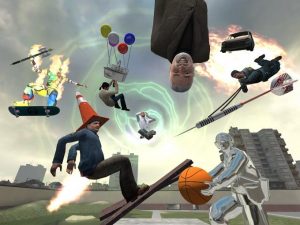
By default, Garry’s Mod has no rules or objectives, not even a single-player mode to introduce you to how things work. You are truly left to your own devices to decide what you want to do. For many, just goofing around with friends is enough, tossing around random characters and objects and watching the physics do the rest. However, for the more ambitious, GMod’s lack of constraints allow for limitless possibilities. GMod is frequently used as a soundstage for creating movies, also known as “Machinima”. Such movies range from genuinely high quality to exploiting the quirks in Source’s physics engine to create some… truly unique experiences.
Cinematic. Perfection.
Surreal animations aside, the ability to edit code in GMod also means that creating entire games wholesale is not outside the realm of possibility. In fact, several popular games, such as Prop Hunt and Trouble in Terrorist Town, saw their start on GMod. All of this has made Garry’s Mod a very popular piece of software for PC gamers. While trying to get into the creation side of things may be hard due to lack of direction, it’s always easy to load it up and play a few rounds of Prop Hunt with friends. Or just make random NPCs ragdoll everywhere. That too.
It’s the little things…
Roblox (2005)
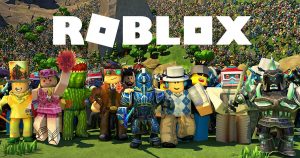
Roblox, released in 2005 by the creatively-named Roblox Corporation, is not a video game. Rather, it’s a “technology platform for developers to develop games on,” according to the creators themselves. Schematics aside, Roblox is all about creating your own blocky-looking avatar and exploring the worlds and games that other players have created… or just making your own, of course.
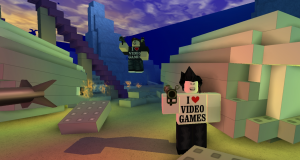
Roblox actively encourages users to create their own content, up to and including letting players write their own code scripts using the Lua programming language. Not only that, but users are fully allowed to sell their creations to others in-game, either by offering specific cosmetic items or individual toys for sale, or by requiring the purchase of a game pass in order to access their game or world. The Roblox developers get a cut, but the rest of the proceeds from the sale go directly to the user who created it. As many Roblox players skew towards the younger side, this can easily be a child’s introduction not only to the concept of UGC, but the ability to make an income from it as well.

Roblox is still going strong today, boasting over 90 million active users monthly. It is also unique among the software we’ve covered in that it has a heavy massively-multiplayer component to it – all of the most popular worlds and games are multiplayer-focused, and you’ll spend lots of time interacting with other users in the community directly like an MMO, rather than simply through comments or reviews. This can make creating and sharing UGC on the platform an intimidating prospect for some, but if you can handle the digital stage fright, you’ll have a very large audience who can give you direct and immediate feedback (and maybe even a few bucks) for whatever you create… So long as you can find a way to stand out and get peoples’ attention, of course.
Minecraft (2009)
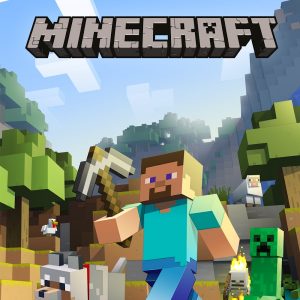
… Okay, seriously, does this game even need an introduction? It’s Minecraft!
*sigh* Fine, fine, but only because we like you.
Originally inspired by another indie title called Infiniminer, Minecraft is the game that put the “sandbox survival” genre on the map. You are dropped in a massive procedurally generated world with nothing but the clothes on your back and the ability to break down the blocks that make up the world and use them as you see fit. What do you do next? That’s entirely up to you. Go diving into caves to fight monsters and mine resources. Build a glorious castle. Use the mysterious Redstone to create complex machines. Invite your friends to explore the world together. The power is yours.
Of course, you probably knew all that already. After all, Minecraft has sold over 100 million copies, and is the best selling PC game of all time (and second best-selling game of all time period, behind only that other blocky classic, Tetris). It’s been released on nearly every platform known to man, woman, and Creeper. It managed to popularize not one, but two major game genres – Sandbox Survival and Battle Royale (a popular type of multiplayer server for Minecraft, Hunger Games, was a Battle Royale-style game before the likes of PlayerUnknown’s Battlegrounds or Fortnite hit the scene). In other words, you’d be hard-pressed to find someone who doesn’t know what Minecraft is.
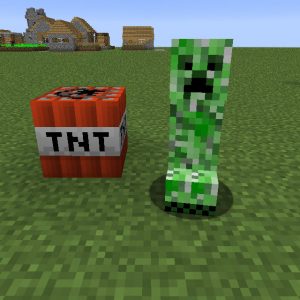
What Minecraft brings to the table when it comes to sandbox creation is also something that needs little introduction. If you’re playing the game in the default mode, Survival, the creation process has the interesting quirk that you can only build with what you’re able to find or craft. Having to go through the process of earning the building blocks for your creation certainly isn’t the most efficient method, but it’s all the more satisfying when you finish your project. Play in Creative mode, however, where you have infinite resources, and nothing is off-limits. There’s always the classic “build gigantic structures that others can gawk at in amazement,” of course, but for those looking for something even nerdier, there’s Redstone and Command Blocks. These can be used to build and code complex machinery, up to and including full-blown computers. And that’s not even getting into the topic of how mod-friendly Minecraft is, allowing players to create unique experiences like the aforementioned Hunger Games mod (don’t worry, we’ll be covering Minecraft mods in more detail in a later article).

Another benefit that Minecraft can claim over other Sandbox Creation games is how popular it’s become in the classroom. Teachers have realized the educational opportunities that Minecraft can provide, from History (recreating ancient cities for your students to explore) to Math (“You have 15 iron and 10 sticks, how many pickaxes can you create?”) to Economics (setting up a barter system for materials) to Engineering (Redstone, just… Redstone), and have capitalized on using Minecraft in a learning context in their schools. As a matter of fact, the fine folks here at E-Line Media actually collaborated with teachers in the past to create a special version of Minecraft exclusively for the classroom, called MinecraftEdu!
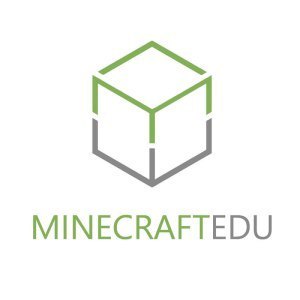
Microsoft would later follow this up with their own take on the concept in the form of Minecraft: Education Edition, while the things we learned while creating MinecraftEdu proved to be invaluable when working on The Endless Mission. All in all, not bad for a game that was made by one guy came from space!
Project Spark (2014)
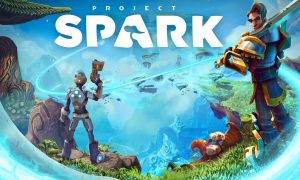
Released in 2014, Project Spark was Microsoft’s answer to the Sony-Exclusive LittleBigPlanet (which we discussed in detail last week). It sought to one-up LBP in several ways, from allowing for fully-fledged 3D games (LBP games by default are primarily top-down or sidescroller games) to having incredibly detailed control when modifying the terrain and individual assets. It also put much more emphasis on the creation portion, with all the base game assets available from the start without having to play through Story Mode to unlock them, and heavy emphasis and support on using the software to create things other than games as well, such as art and movies. It even made some really clever use of the Kinect: You could give your characters custom animations by acting said animations out in front of the Kinect camera, for instance.
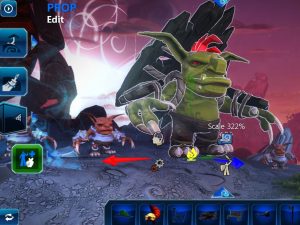
The game was free-to-play, but with very limited assets available at the start. You had to pay real money to get each of the many DLC packs available before you could start building the really creative stuff, a design decision that proved to be very polarizing. Eventually, Microsoft decided to make all the DLC available for free, but it did little to encourage people to try it out.
Project Spark also found itself at the center of a bit of a controversy surrounding the “return” of Conker, an older IP that people had been clamoring for a sequel for quite some time. When the highly-anticipated return was revealed to simply be the Conker’s Big Return DLC pack in Project Spark rather than an actual game, it left a bad taste in a lot of folks’ mouths. Exacerbating matters further was the fact that Project Spark was primarily billed as a family-friendly game while the Conker franchise… isn’t.
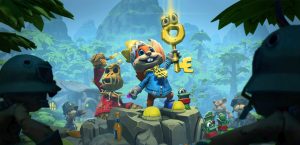
Ultimately, though, the biggest hurdle for Project Spark was that it just plain never caught on. Project Spark only saw middling sales and community even though it was on three different platforms (Xbox One, Xbox 360, and PC). When Microsoft announced that they would not be releasing any more assets and would instead be relying on “the community” to create new content, pretty much everyone saw the writing on the wall. Several months later, the Project Spark servers were shut down completely – the game can no longer be downloaded, and even if you do already have it, there is no longer any way to share what you create with the world.
Project Spark is a case study in why nurturing a healthy community for your UGC-focused game is critically important. UGC only thrives when there are many different users all creating and sharing their creations with each other. If you make decisions that alienate your playerbase, or if the software is unable to gain traction in the first place, your game may be very short-lived indeed. Rest assured, maintaining an active and engaged community in The Endless Mission is a major priority for us!
Dreams (2019)

Okay, now we’re on the real cutting edge of sandbox creation games… This game’s so new, it technically isn’t even out yet! Dreams is the next game by Media Molecule, the same guys responsible for LittleBigPlanet. Unlike that game, Dreams makes it clear that it’s about all kinds of creations, not just games. Want to craft a sculpture? Paint a masterpiece? Film an epic movie? Dreams gives you the tools to do all of this, and leaves the rest up to you.
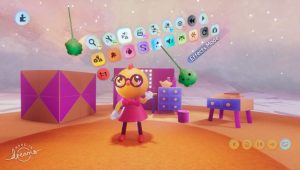
At the moment, Dreams is only available in Early Access, meaning that nothing is quite finalized yet and they’re still receiving suggestions and feedback from thousands of users. Even while it’s still in Beta, however, the things people have put together are nothing short of stunning: Immaculate recreations of classic games, interactive art exhibits, haunting and atmospheric musical compositions, and so much more.
Additionally, Dreams puts a heavy emphasis on the community sharing their creations and building each other up. When exploring other people’s work, there’s an “Autosurf” option that’ll shuffle up a random selection of content that you then experience in rapid-fire fashion. This helps to show off the sheer breadth of what can be created, and gives players the chance to discover something brand new that they might not have found otherwise. And if you find something that you love so much you want to use in your own creations? You can just download it, and Dreams will handle giving the proper credit for the components you used automatically when people check out your completed project. It’s the “Works Cited” page your high school lit teacher wishes they had.

While there are some areas that they are still actively collecting feedback on and working to improve – the beauty of Early Access! – there is no denying the amount of freedom Dreams offers, nor the kind of helpful, engaging community it’s fostering. We can’t wait to see more of Dreams in the future, as it’s looking to be an excellent companion piece for The Endless Mission.
In Conclusion…
Sandbox creation games have really taken off in recent years, as technology makes it easier and easier to use a game-like interface to just make… well… anything! But we’re not done yet: Tune in next time as to see what happens when you decide to strip away the gamer-friendly interface and get into the real nitty-gritty of making games!
Image Sources: Steam, KnowYourMeme, GIPHY, Roblox, Joann.com, Minecraft, @Legomasta99, nathannagele.com, Micrososft, WindowsCentral.com, Destructoid, Playstation, RoadtoVR.com, Kotaku.
BACK TO DEV BLOG

